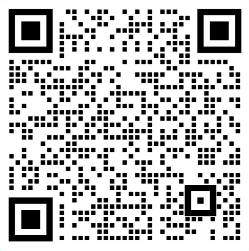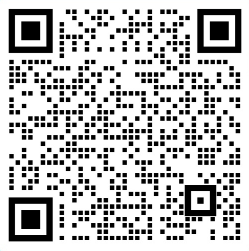How does the PLC in the Internet of Things realize real-time data acquisition?
Views : 5496
Author : Jeakie
Update time : 2023-05-12 10:22:45
How does the PLC in the Internet of Things realize real-time data acquisition?
Data collection and transmission is very important for subsequent analysis and decision-making of enterprises, and real-time data collection can improve the awareness of the overall production, so as to take more timely and efficient measures.
Therefore, PLC real-time data acquisition has become the basic application of enterprises, so how does PLC realize real-time data acquisition?
Protocol Analysis
Protocol analysis is the first step in PLC data acquisition. PICs of different brands and models may support different communication protocols, such as Siemens, Mitsubishi, Schneider, Omron, Delta, Inovance, etc. Communication protocols are like different languages. If there is no analysis and translation, there will definitely be a lack of dialogue basis. Therefore, if the protocol analysis of the PLC is not performed, the data inside the PLC cannot be obtained, let alone the subsequent data uploaded to the cloud.
Data Collection
After the protocol is analyzed, the internal storage address of the PLC can be accessed, and the actions performed by the PLC can be obtained through the point table, so as to understand the operating status of the device. For enterprises, PLC is not the same as it is all useful. It may only need to change data or out-of-limit data. At this time, intelligent collection and edge computing algorithms are needed to obtain accurate and useful data and reduce server load. The operating pressure improves the efficiency of collection and transmission.
Data Cloud
There are various data transmission methods. 5G/4G/WIFI/Ethernet are the mainstream data transmission methods. You can freely choose wired/wireless, single/local area and other transmission methods according to your needs. Similarly, there are various communication protocols used in transmission, such as MQTT, Modbus, etc. This is the need to focus on data security and protect data security and integrity.
Data Application
This step is an important measure of whether data can be transformed into productivity. Through the visualized charts displayed in real time on the cloud, factories and enterprises can obtain equipment data such as PLCs, water meters, electric meters, and CNC machine tools at any time, and can also set automatic alarms. Through intelligent analysis and calculation, a series of purposes such as optimizing energy consumption, improving process, increasing efficiency and reducing cost can be achieved.
BLIIOT independently develops various types of programmable controller products, various AI, DI, AO, DO signal types, WiFi, Ethernet, GPRS and other communication methods, supports multiple serial ports, supports infrared learning, control and other functions. Built-in PID and other control logics. Support free logic and communication programming functions. In addition, Zhongyi Cloud also has a variety of controller products in special fields.
With the maturity of industrial Internet of Things equipment and solutions, PLC real-time data collection can realize data uploading to the cloud with the help of industrial intelligent gateways, and remote monitoring and early warning of PLC can be carried out through mobile phones or computers, which can bring great benefits to equipment manufacturers and users. high economic benefits. The factory can observe the operating status of the equipment at any time, carry out early warning and maintenance in time, improve the stability of equipment operation, avoid additional losses caused by equipment failure, and achieve the purpose of reducing costs and increasing efficiency.
Data collection and transmission is very important for subsequent analysis and decision-making of enterprises, and real-time data collection can improve the awareness of the overall production, so as to take more timely and efficient measures.
Therefore, PLC real-time data acquisition has become the basic application of enterprises, so how does PLC realize real-time data acquisition?
Protocol Analysis
Protocol analysis is the first step in PLC data acquisition. PICs of different brands and models may support different communication protocols, such as Siemens, Mitsubishi, Schneider, Omron, Delta, Inovance, etc. Communication protocols are like different languages. If there is no analysis and translation, there will definitely be a lack of dialogue basis. Therefore, if the protocol analysis of the PLC is not performed, the data inside the PLC cannot be obtained, let alone the subsequent data uploaded to the cloud.
After the protocol is analyzed, the internal storage address of the PLC can be accessed, and the actions performed by the PLC can be obtained through the point table, so as to understand the operating status of the device. For enterprises, PLC is not the same as it is all useful. It may only need to change data or out-of-limit data. At this time, intelligent collection and edge computing algorithms are needed to obtain accurate and useful data and reduce server load. The operating pressure improves the efficiency of collection and transmission.
Data Cloud
There are various data transmission methods. 5G/4G/WIFI/Ethernet are the mainstream data transmission methods. You can freely choose wired/wireless, single/local area and other transmission methods according to your needs. Similarly, there are various communication protocols used in transmission, such as MQTT, Modbus, etc. This is the need to focus on data security and protect data security and integrity.
Data Application
This step is an important measure of whether data can be transformed into productivity. Through the visualized charts displayed in real time on the cloud, factories and enterprises can obtain equipment data such as PLCs, water meters, electric meters, and CNC machine tools at any time, and can also set automatic alarms. Through intelligent analysis and calculation, a series of purposes such as optimizing energy consumption, improving process, increasing efficiency and reducing cost can be achieved.
BLIIOT independently develops various types of programmable controller products, various AI, DI, AO, DO signal types, WiFi, Ethernet, GPRS and other communication methods, supports multiple serial ports, supports infrared learning, control and other functions. Built-in PID and other control logics. Support free logic and communication programming functions. In addition, Zhongyi Cloud also has a variety of controller products in special fields.
With the maturity of industrial Internet of Things equipment and solutions, PLC real-time data collection can realize data uploading to the cloud with the help of industrial intelligent gateways, and remote monitoring and early warning of PLC can be carried out through mobile phones or computers, which can bring great benefits to equipment manufacturers and users. high economic benefits. The factory can observe the operating status of the equipment at any time, carry out early warning and maintenance in time, improve the stability of equipment operation, avoid additional losses caused by equipment failure, and achieve the purpose of reducing costs and increasing efficiency.
















